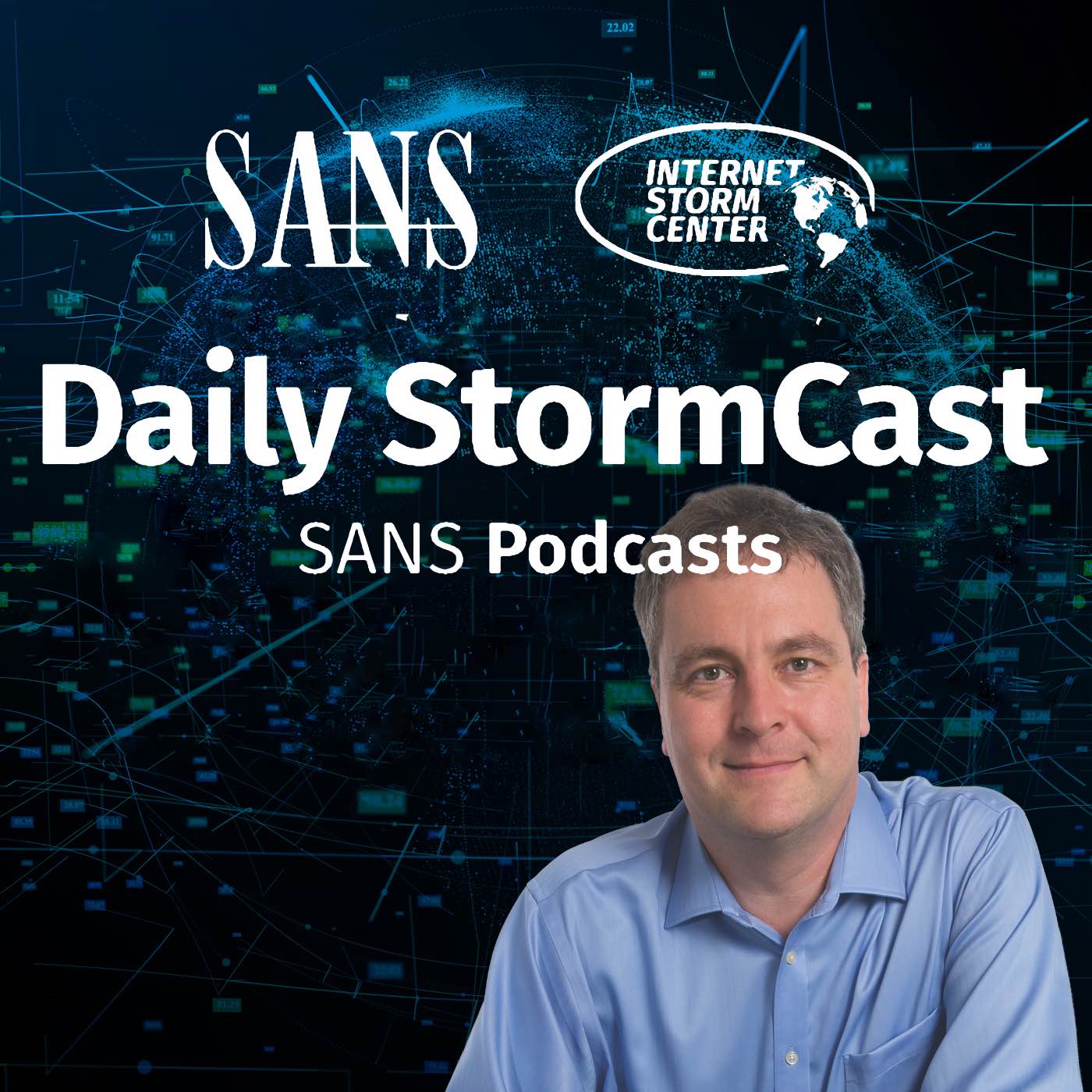Handler on Duty: Brad Duncan
Threat Level: green
Podcast Detail
SANS Stormcast Friday, June 13th, 2025: Honeypot Scripts; EchoLeak MSFT Copilot Vuln; Thunderbolt mailbox URL Vuln;
If you are not able to play the podcast using the player below: Use this direct link to the audio file: https://traffic.libsyn.com/securitypodcast/9492.mp3
My Next Class
| Network Monitoring and Threat Detection In-Depth | Online | Central European Time | Dec 15th - Dec 20th 2025 |
| Application Security: Securing Web Apps, APIs, and Microservices | Orlando | Mar 29th - Apr 3rd 2026 |
Automated Tools to Assist with DShield Honeypot Investigations
https://isc.sans.edu/diary/Automated%20Tools%20to%20Assist%20with%20DShield%20Honeypot%20Investigations%20%5BGuest%20Diary%5D/32038
EchoLeak: Zero-Click Microsoft 365 Copilot Data Leak
Microsoft fixed a vulnerability in Copilot that could have been abused to exfiltrate data from Copilot users. Copilot mishandled instructions an attacker included in documents inspected by Copilot and executed them.
https://www.aim.security/lp/aim-labs-echoleak-blogpost
Thunderbolt Vulnerability
Thunderbolt users may be tricked into downloading arbitrary files if an email includes a mailbox:/// URL.
https://www.mozilla.org/en-US/security/advisories/mfsa2025-49/
Discussion
New Discussions closed for all Podcasts older than two(2) weeks
Please send your comments to our Contact Form
| Network Monitoring and Threat Detection In-Depth | Online | Central European Time | Dec 15th - Dec 20th 2025 |
| Application Security: Securing Web Apps, APIs, and Microservices | Orlando | Mar 29th - Apr 3rd 2026 |
| Network Monitoring and Threat Detection In-Depth | Amsterdam | Apr 20th - Apr 25th 2026 |
| Application Security: Securing Web Apps, APIs, and Microservices | San Diego | May 11th - May 16th 2026 |
| Network Monitoring and Threat Detection In-Depth | Online | Arabian Standard Time | Jun 20th - Jun 25th 2026 |
| Network Monitoring and Threat Detection In-Depth | Riyadh | Jun 20th - Jun 25th 2026 |
| Application Security: Securing Web Apps, APIs, and Microservices | Washington | Jul 13th - Jul 18th 2026 |
Podcast Transcript
Hello and welcome to the Friday, June 13th, 2025 edition of the SANS Internet Storm Center's Stormcast. My name is Johannes Ullrich, and this episode brought to you by the SANS.edu Undergraduate Certificate Program in Cybersecurity Fundamentals is recorded in Jacksonville, Florida. Well, in diaries today we have yet another diary by one of our undercredit interns. This time William Constantino is looking into scripts that he wrote in order to summarize data from the DShield honeypot. Of course, we have shown scripts like this before, and when you're looking at the diary, I don't want you to look at it with sort of the lens where you say, hey, how am I using this script for myself? I think what's sometimes more useful is to look at it, how could I create a script like this, and which ideas from William's script may actually apply to my particular use case. So look at what kind of data William extracted from the honeypot here. Is this useful to you or not? And then also how some of the details were implemented in these scripts, and that's, I think, a better way to look at it. Creating these scripts yourself sometimes has a real great sort of educational value, not just with respect to learning how to script, but also sifting through data yourself, looking at some of the oddities in the data and such. You're really becoming way more familiar with the data as a result, and as a result also better in actually extracting useful artifacts from these logs. So the way the attack works is that an attacker starts out by sending an email. That email now basically includes a command that it wants the copilot to execute. Now it's not directly addressed at the copilot. It's addressed at the user. But that's again sort of where copilot gets confused, and that's where the real sort of issue happens, where now an attacker is able to basically control copilot. Now the next part is then all about trying to exfiltrate the data, and that's done by actually inserting image links into the response. And part of the URL is then the data that's being exfiltrated. That also basically then requires taking advantage of a couple other weaknesses in how these links are created and constrained. Interesting vulnerability, and yes, this particular issue has been fixed by Microsoft. But overall, of course, this is more sort of one of those fundamental problems that probably exists in many similar systems. And we've got an interesting vulnerability in Thunderbird. It's not the most critical vulnerability. I think they actually only rated as medium, but I think it sort of also follows good follow-up to yesterday's vulnerability in KDE with Telnet links. This time it's mailbox links. So links starting with mailbox colon and then three slashes. Triggers apparently an unsolicited download of whatever document is then being listed after this mailbox colon protocol indicator. And that can, first of all, be abused to basically just load a malicious PDF to the user's desktop. It can also be used to trick the system then to reach out via SMB, which then gets us back to the usual credential leakage. So a bunch of different options here available. And something that I don't quite think that medium quite covers it really well. This is something where, again, the creativity of the attacker will have a large part in how this may potentially be exploited. And certainly don't forget to update Thunderbird if you're using it as your email client. Well, and that's it for today. So thanks for listening. Thanks for any feedback that you have. Please email or send me via other means. And thanks for any good reviews that you'll leave in your favorite podcast platform. Next week, I will not have a podcast on Wednesday and Thursday due to some personal travel. But Monday, Tuesday, Friday should just work as usual. So talk to you again on Monday. Bye.











